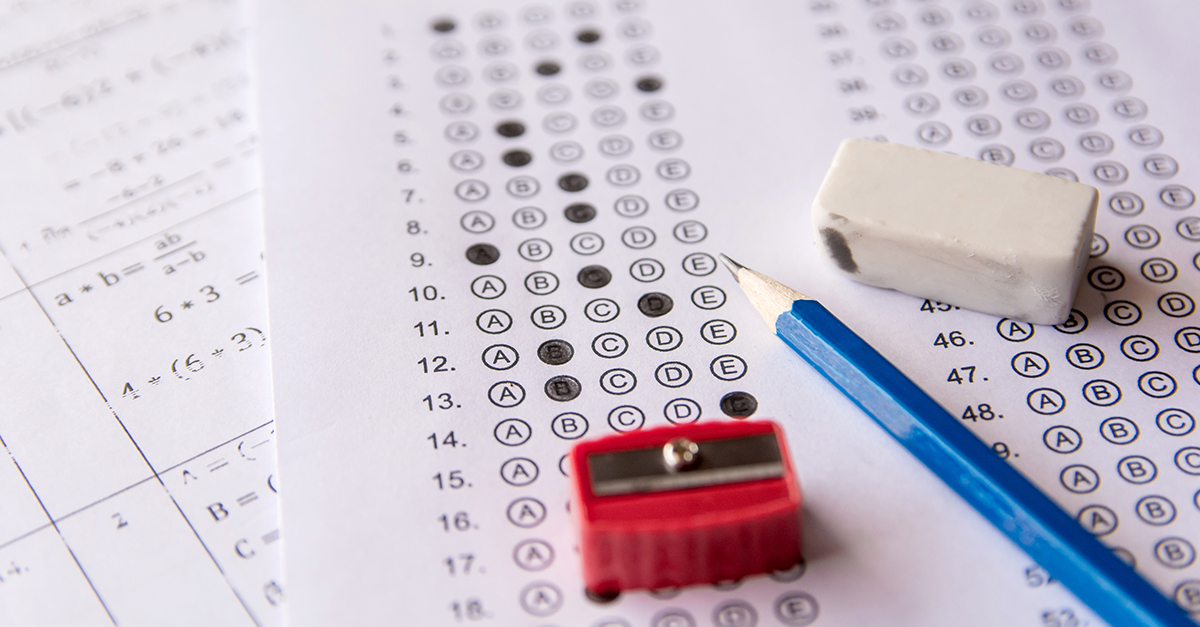Multiple-Choice Tests: What is Distractor Rationale?

In Algebra 1: Principles of Secondary Mathematics, instructors will see a new and very useful feature for multiple-choice problems: distractor rationale. But what exactly is distractor rationale? In short, it’s the reasoning behind why the incorrect answers are present for a multiple-choice problem. When a problem is designed, “distractor” answers are included to try and affect the student’s choice. If a student answers incorrectly, an instructor can usually determine where the gap in the student’s understanding is based on what answer they chose. Knowing about and understanding distractor rationale is very helpful for students who plan to take a college entrance exam or other standardized test.
What Does Distractor Rationale Look Like?
Let’s look at an example. Suppose your student encounters the following question:
Determine the value of the quotient for 10 and 2.
A) 5
B) 8
C) 12
D) 20
The word quotient is critical to the problem. If a student picks a choice other than A, you can use the distractor rationale to help determine that a student does not know the meaning of the word quotient. Look at the options below to see why the values for B, C, and D were chosen:
Determine the value of the quotient for 10 and 2.
| ★ | A) 5 | Work: Quotient is the solution to a division problem. | 10 ÷ 2 = 5 |
| B) 8 | This is the difference between 10 and 2 | 10 – 2 = 8 | |
| C) 12 | This is the sum of 10 and 2 | 10 + 2 = 12 | |
| D) 20 | This is the product of 10 and 2 | (10)(2) = 20 |
How Is This Helpful to Instructors?
Distractor rationale is important because it helps the instructor see and understand where possible misunderstandings are occurring. If the question above was given to a student and they chose B, C, or D, the instructor could have the student explain what they believe the meaning of the word quotient is. Then the correct definition can be reviewed so the student understands their mistake.
Distractor rationale is also a wonderful way to have conversations about math. Sharing it with your student can help them better understand how test questions are written and where they might have a misunderstanding. The instructor could even challenge their student to come up with distractor rationale of their own. Then a conversion can be had about what key details in the problem might be overlooked that would result in the other choices.
Another option is to use the distractor rationale after students complete the Unit Tests, Midterm and Final exams in Algebra 1: Principles of Secondary Mathematics. After the tests have been marked, the incorrect answers can be discussed using the rationale. This will help your students master the material correctly by addressing any misconceptions before moving on to the next unit or level. They could also do test corrections and, either in writing or verbally, explain where they got distracted and how they can fix this mistake. It is important to note that the rationale provided is not all-inclusive. Your student could brainstorm other responses as well, but these tend to be the most common errors.
Prepare Students for Test Taking
Most standardized tests, including well-known ones like AP, ACT, SAT, and CLT, use a multiple-choice format for consistency and ease of grading. When a student is aware of distractor rationale, they are more prepared to take those tests because they anticipate distraction answers—and they have more confidence!